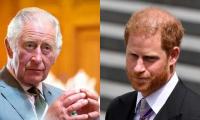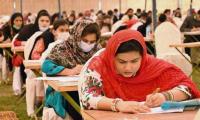LAHORE: Total taxes after adjusting inflation on a pack of 20 cigarettes increased by Rs15 per pack between 2011 and December 2015 in Pakistan.
According to a research report released by the KPMG titled ‘A Review of Cigarettes taxation in Pakistan’, over the same period, the pre-tax price of cigarettes (ie the price excluding all duties and sales tax) increased by a smaller amount, by Rs10 per pack of 20 cigarettes in real terms.
As a result, the average pack price increased from Rs43 to Rs68, in real terms, with taxes responsible for 62 percent of the retail price increase. Over the same period, the average household income fell by one percent, in real terms.
The KPMG conducted an econometric regression analysis to calculate the relationship between cigarette prices and duty paid cigarette sales volumes, allowing for all other possible influences on sales.
The price elasticity of demand for cigarettes in Pakistan has been increasing over time as the affordability of cigarettes has declined, driven by increasing prices and stagnant household incomes.
The price elasticity of demand increased from -0.92 in 2014 to -1.26 in December 2015.
The combination of a decline in household income and rising duty paid cigarette prices made cigarettes 59 percent more expensive, relative to incomes, for consumers in December 2015 compared to 2011.
The increase in the price of duty paid cigarettes contributed to a widening price differential between Value For Money (VFM) segment duty paid and illicit cigarettes from Rs11 to Rs28 per pack between the 2010/11 and 2015/16 fiscal periods.
Between 2011 and 2015, duty paid cigarette sales volumes fell by six percent as duty paid cigarettes became less affordable for consumers.
The higher price of duty paid cigarettes relative to average household incomes increased the incentive for consumers to look for lower priced alternatives.
A report by the WHO also found that, between 2008 and 2014, the affordability of cigarettes in Pakistan declined as a result of “tax and price increases in those years coupled with relatively slow income growth.”
Between 2010/11 and 2015/16, illicit cigarette consumption, for example, increased by over 69 percent.
An independent report by Euromonitor suggests there are three main sources of illicit cigarettes in Pakistan; cigarettes produced primarily by local manufacturers who do not pay any duty and represent 89 percent of total illicit consumption, domestically manufactured counterfeit cigarettes of a negligible quantity, and cigarettes smuggled into Pakistan from neighbouring countries such as Iran and Afghanistan which are estimated to be around 11 percent of the total illicit cigarette consumption.
Consumers may also have, in part, responded to cigarette price increases by reducing the amount of duty paid cigarettes consumed per day or switching to alternative tobacco products.
Had tax been collected on all illicit cigarettes consumed in the financial year 2010/11, tax revenues would have been 19 percent higher than they were. Had taxes been collected on all illicit cigarettes consumed in the 2014/15 financial year, this would have increased cigarette tax revenues by 29 percent, around Rs30 billion.
However, an incremental approach to tax rate increases, instead of single large tax rate hikes, should help to avoid unintentional consequences arising from large tax rate increases, such as the further growth of the illicit market, with no corresponding benefit for tax revenues.
The report estimates that improvements in enforcement against illicit cigarette trade would have had a larger positive effect on tax revenues than further increases in cigarette tax rates.
The excise yield increased in real terms, on average, from Rs21.1 to Rs32.6 per pack of 20 duty paid cigarettes between 2011 and December 2015. This followed the implementation of two separate tax increases within the 2015/16 fiscal year, the first time this has been undertaken in the current excise regime. Pakistan’s total tax incidence is currently higher than the global average.
According to the Pakistan Bureau of Statistics, between 2010/11 and 2014/15, indirect taxes as a proportion of final consumption expenditure in Pakistan increased from 6.1 percent to 6.7 percent over the period 2011 to December 2015. The total taxes on cigarettes increased by around 110 percent in nominal terms. Over the same period, inflation amounted to 35 percent.
The report stated that the total tax incidence in Pakistan was 60.7 percent of the weighted average price of cigarettes. This is higher than the global average and is higher than the average in every region of the world apart from Europe.
Systems Limited, IT and IT-enabled services provider, hosted US Ambassador to Pakistan Donald Blome on May 3, 2024....
The logo of the Telenor Microfinance Bank . — temenos websiteKARACHI: Telenor Microfinance Bank reported a strong...
Chief Executive TDAP Mr. Zubair Motiwala met with HE Dr. Bakheet Ateeq Al-Remaiti, Consul General of UAE, in Karachi...
A representational image of gold bangles. — AFP/FileKARACHI: Gold prices in the local market dropped by Rs1,400 per...
A person walks by a sign advertising employment at a fast-food restaurant in New York City. — AFP FileWASHINGTON:...
This picture taken on January 30, 2023 shows residents buying vegetable at a market in Karachi. — AFP/FileLAHORE:...







